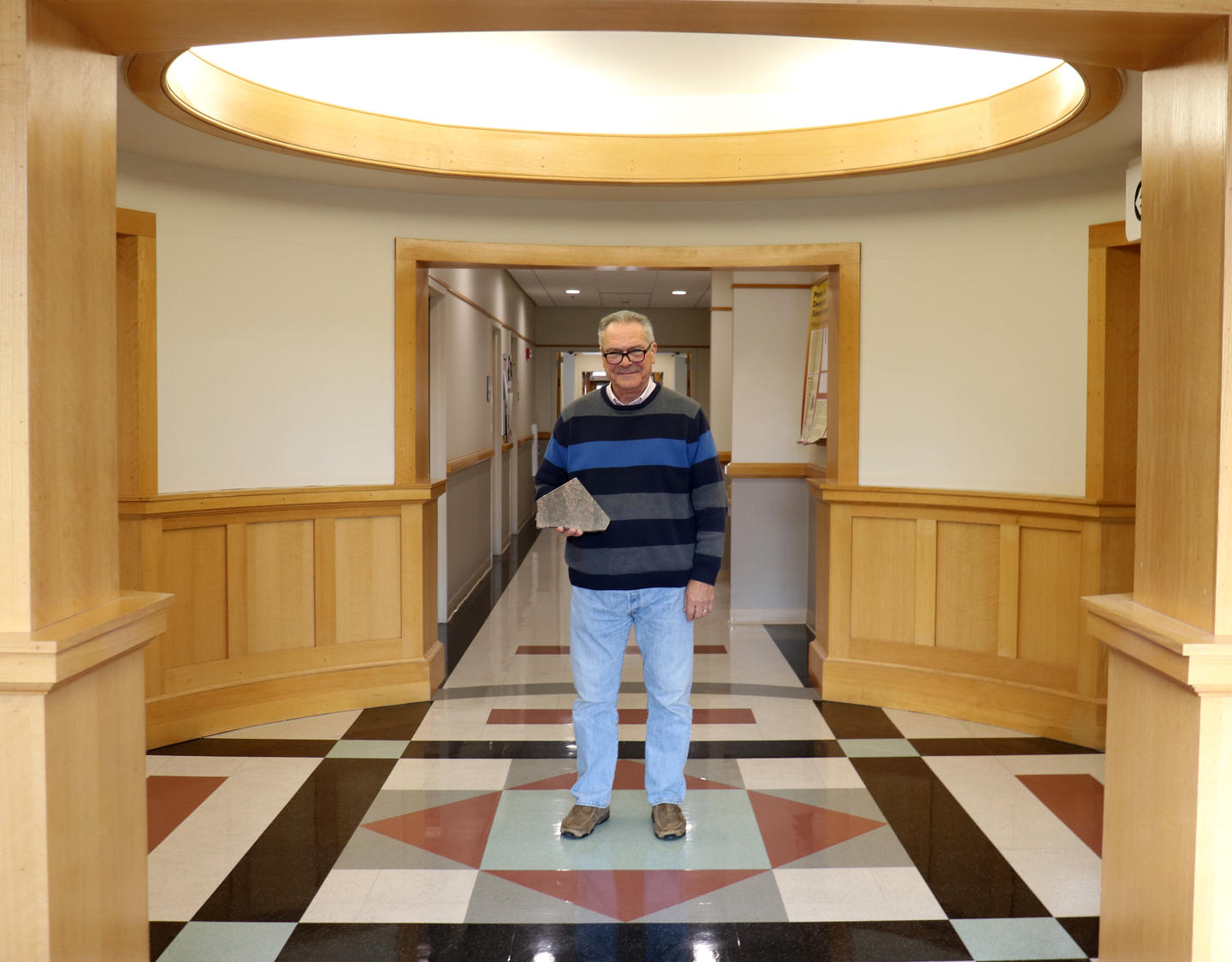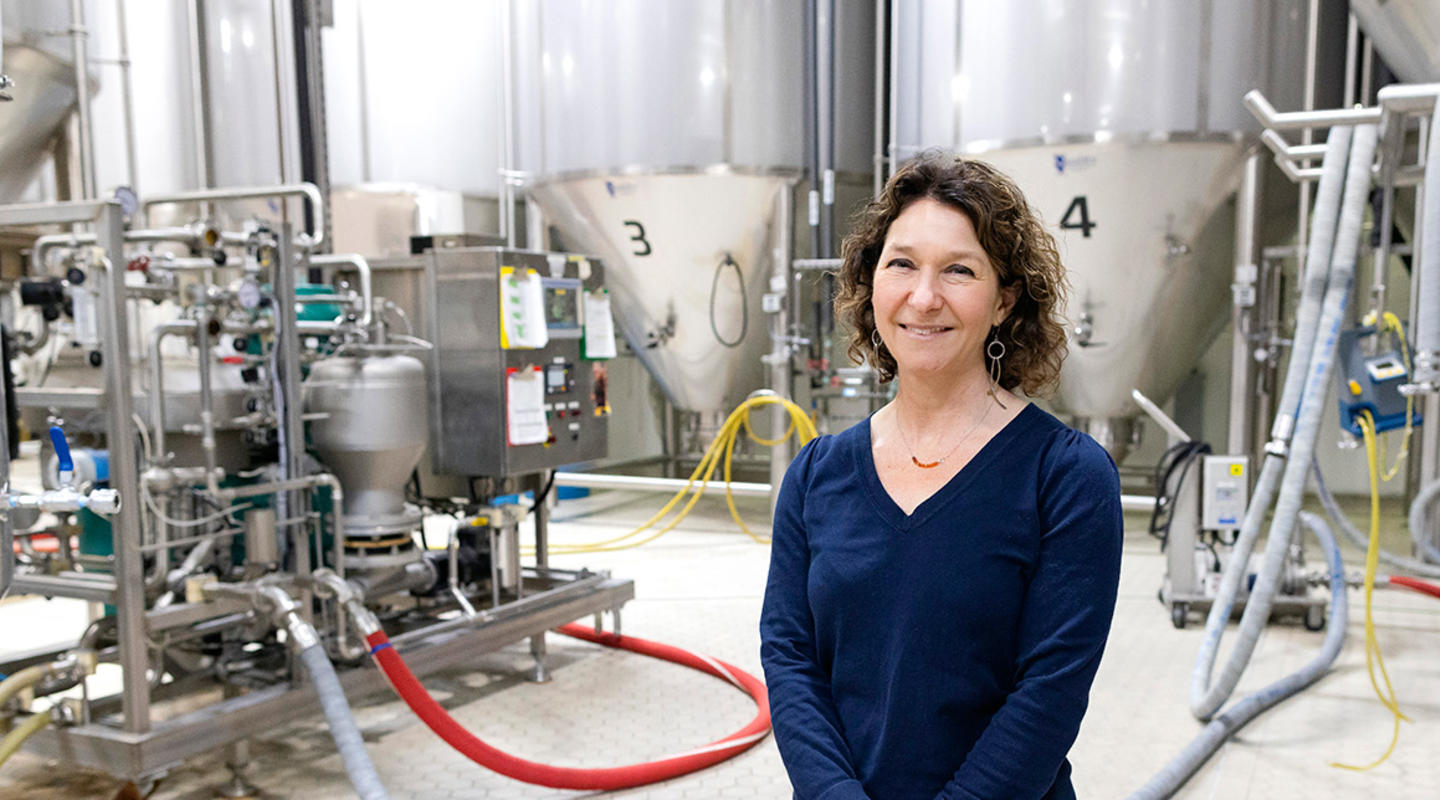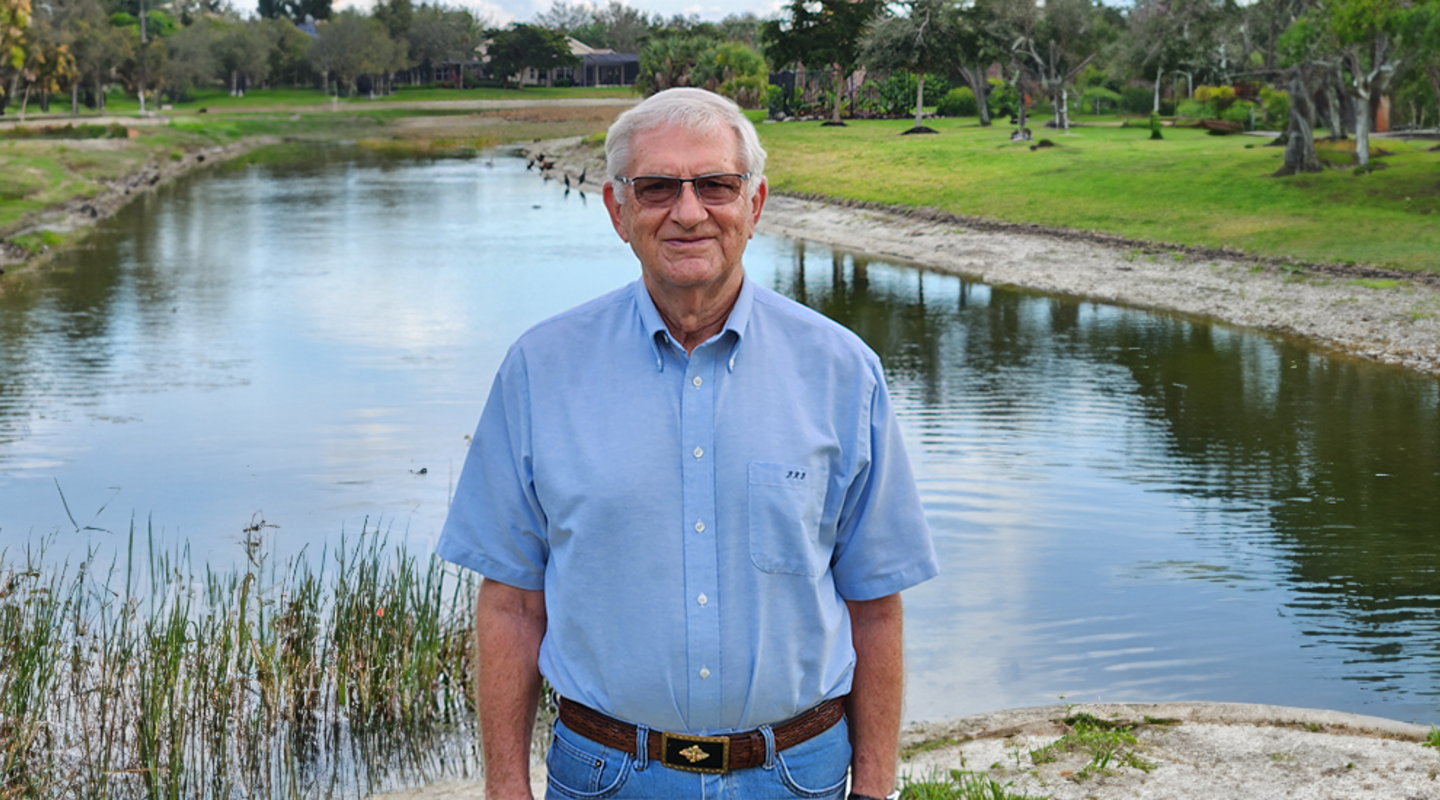
Professor Michael Zavada holding a piece of Morton gneiss. Photo: Kari Adams
Last fall, Michael Zavada became the first professor selected for the Morton Gneiss Professorship in Environmental Sciences at the University of Minnesota Morris.
Named for the 3.5-billion-year-old bedrock beneath Minnesota, the professorship was funded by anonymous alumni donors who are concerned about climate change, preserving ecosystems, and the endangerment and extinction of species.
“We hope that by helping to hire an environmental sciences professor at UMN Morris, some terribly brilliant person will make an innovation or discover a complex relationship in nature that meaningfully mitigates climate change or helps humanity adapt to change,” they said about their wishes for the position.
Zavada, who recently served as a dean, a chair of geosciences, and a professor of biology and geosciences at the University of Texas Permian Basin, admires such long-term thinking. “The donors support a position and a discipline that is important to the future and the quality of our existence,” he says. “That says a lot about the donors and the University.”
Environmental issues are becoming increasingly important and critical to maintaining our quality of life, he explains. “It’s about bringing … groups of people together to work for the public good … that’s one of the things that this position inspires.”
Working with students
Zavada also saw the Morton Gneiss Professorship as a chance to get back to what drew him to higher education: “to work with students, to have that camaraderie among the faculty, to talk freely with colleagues and students, allowing students and faculty to brainstorm about solutions to some of our most pressing issues as a society and as a species without worrying about boundaries.”
Much of his work will involve conducting research with students. He plans to take environmental science and environmental studies students to Puno, Peru, to learn about water quality, mining operations, agriculture operations, fisheries, and range management.
He hopes some students will do environmental studies projects on issues affecting Indigenous people in the Andes, such as sustainability, food security, and human rights.
“It is important that students get the sense that changing the world is possible, even if you are at a rural university like UMN Morris. Size doesn’t matter in education, just a willingness to learn and the energy to do so.”
Support the Morton Gneiss Professorship in Environmental Sciences at the University of Minnesota Morris.


